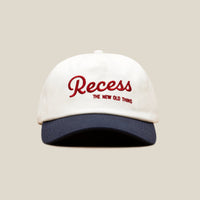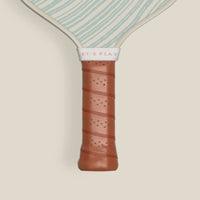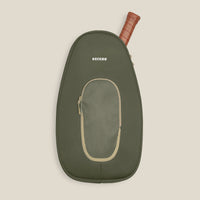Introduction to Pickleball
Pickleball is a dynamic and captivating game that's taken the world by storm. In this comprehensive guide, we're delving into pickleball, exploring its origins, benefits, techniques, and more. Whether you're new to learning or a seasoned player looking to up your game, this guide has got you covered.
Definition of Pickleball
Meet pickleball: the lovechild of ping pong and tennis, the perfect companion to a cold drink and good friend, and the very thing your Saturday afternoons are missing.
Pickleball is played with a solid paddle and a perforated plastic ball on a badminton-sized court with a lowered net. The goal? Score points by hitting the ball over the net and into the opponent's side of the court.
For more on the definition of pickleball, please read our "What is Pickleball?" blog!
History and Popularity of Pickleball
Pickleball was born in the mid-1960s from a desire to create a new backyard game for all ages. Its creators, Joel Pritchard, Bill Bell, and Barney McCallum, combined elements from various sports and created a game that was easy to learn and play. Over the years, pickleball's popularity has grown at a rapid rate, with dedicated courts popping up in communities, recreation centers, and even professional sports clubs.
Benefits of Playing Pickleball
Pickleball is not only fun, but it also has health benefits like improving cardiovascular health, agility and hand-eye coordination. The game is social and inclusive in nature, allowing players of all levels to jump in, compete and have fun together.
Different Levels of Pickleball Play
Pickleball is accessible to all skill levels. Whether you're just starting out or looking to take your game to the next level, there are a variety of ways to get involved in pickleball. More and more cities are building courts for access to recreational play, along with organized competitive tournaments. Whether you're in Austin, Los Angeles, Dallas, Atlanta, Phoenix, Houston, New York City, or anywhere else in the US, pickleball courts are popping up everywhere!
Getting Started with Pickleball
 Understanding the Basic Rules
Understanding the Basic Rules
Like all racket sports, pickleball starts with a serve. But in the pickleball universe, the serve must take place behind the baseline, be underhanded and below your waist (think: a volleyball serve that’s only underhanded, not overhanded), and land crosscourt into the opposing team’s service court. Aside from a handful of pickleball rules, you basically just pass the ball back and forth between your opponent – easy peasy. For an in-depth look at rules, check out our ultimate pickleball guide.
Equipment Needed to Play Pickleball
To play a game of pickleball, you’ll need a pickleball paddle, pickleballs and supportive shoes for shuffling around the court. At Recess, we deliver on design-driven paddles with quality technical specs. With a solid honeycomb core, a textured surface for spin, and a sweat-proof grip made of highly condensed foam, it will quickly become your favorite paddle.
Choosing the Right Pickleball Paddle
At Recess, we have two different paddles to choose from to suit your playing style. Our Classic pickleball paddles are popular amongst beginners and intermediate players alike, while our Advanced paddles are loved by intermediate to advanced players. For more help choosing the right paddle, see our detailed guide here!
Selecting Suitable Court Shoes
Pickleball includes quick shuffling and movement throughout the game, so supportive court shoes are a must to prevent injuries. Prioritize support, traction and stability when looking for the right footwear for the courts.
Learning Basic Pickleball Techniques

Mastering The Serve
The serve is a foundational element of pickleball, setting the tone for each rally. Practice different serving techniques, such as the underhand serve and the power serve, to gain an advantage and keep your opponents on their toes.
Forehand and Backhand Shots
Developing your forehand and backhand shots is essential for consistency and accuracy. Focusing on using the proper grip, body positioning, and follow-through can help you control the direction and speed of your shots.
The Importance of the Dink Shot
The dink shot is a soft and precise shot that lands just over the net. Many advanced players use this shot as a strategy to control the point and outmaneuver their opponents.
Strategies for Doubles Play
In doubles play, prioritize communication, teamwork, and positioning with your teammate. Talk through strategies to coordinate with your partner, cover the court, and capitalize on your individual strengths, together as a team.
For more strategies and shot details, visit our in-depth guide here.
Improving Your Pickleball Skills

Pickleball Drills for Beginners
Targeted drills are helpful to develop your skills and build muscle memory. Practice serves, volleys, and dink shots to improve your technique and increase your confidence on the court.
Tips for Effective Practice Sessions
If you’re interested in leveling up your game, structured practice sessions are key to improvement. Set specific goals, focus on one skill at a time, and look for feedback from more experienced players to get even better.
Taking Pickleball Lessons or Clinics
Enrolling in lessons or clinics can help you fine tune your skills. Benefit from personalized guidance and tips on strategic gameplay from experienced instructors in your community.
Participating in Local Leagues
Joining a local pickleball league is a great way to make new friends and play more competitively in a supportive environment. Leagues foster camaraderie and a sense of community among players.
Health and Safety While Playing Pickleball

Warm-Up and Cool-Down Routines
Stretching is always a good idea! Pickleball involves a lot of muscles that you may not use regularly, so it’s a good idea to incorporate dynamic stretching routines before or after you hit the court. These practices will help warm-up your body to quick movements required in the game, along with aid in recovery and exertion after the game.
Preventing Common Pickleball Injuries
Though pickleball is accessible to people of all physical abilities and skill levels, the game can still require a lot of agility, movement and coordination. Wearing supportive shoes and listening to your body throughout game play are keys to avoiding strains, sprains and overuse injuries on the court.
Staying Hydrated and Energized
Since pickleball can be physically demanding, staying hydrated and energized are important. Bring along a Recess Retro Water Bottle and replenish with an electrolyte mix during or after the game.
Importance of Rest and Recovery
If you’re new to the game, take some time to ease in and give your body a break after intense or lengthy gameplay. Since you’ll be using new muscles, you may be sore and tired after playing.
Conclusion: Your Pickleball Journey Ahead

Embracing the Fun of Pickleball
At the end of the day, pickleball is about having fun. Whether you’re playing casually or competitively, there’s always room to improve your skills and make new friends through pickleball.
Setting Personal Goals
Struggling in one area of the game? Work on setting achievable goals focusing on one skill set at a time, like improving your serve, solidifying a new shot, or advancing your rank. These goals can give you direction for improving your gameplay.
Joining the Pickleball Community
Pickleball is more than just a game; it's an opportunity for community. Make connections with other players, find local events to participate in, and check out social activities to cultivate lasting friendships on and off the court.
Continuous Learning and Improvement
Pickleball is an ever-evolving sport that presents opportunities for learning and advancement. Embrace the process of learning something new, work to improve your shots, meet some friends, and most importantly, have fun.
Still looking to learn more? Check out our ultimate guide to pickleball post to learn more about the game!










